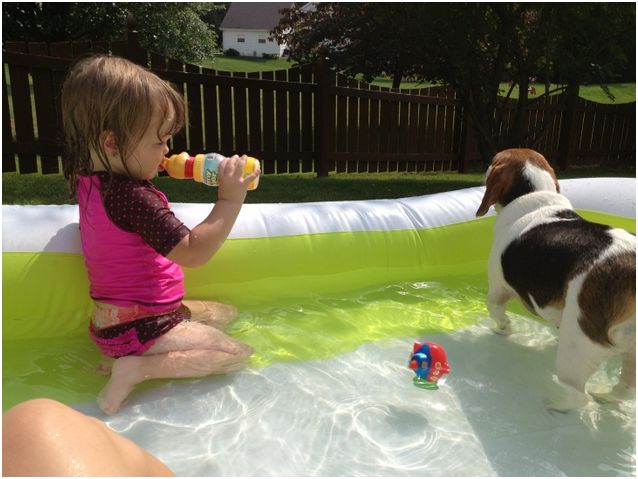Pet Blogging Business Plan ~ Part 3 Pulling It All Together
Post by Blog Manager Robbi Hess
As we wrap up this series, we will be focusing on how all of the information you’ve thought about and written about your business can come together in a living, breathing document. Once you’ve written your business plan you don’t want to put it on a shelf, pat yourself on the back and walk away from it.
This document is something you should look at quarterly to make certain you’re meeting the goals you’ve set. You will want to review your mission and vision statement (Part 1 of the pet blogging business plan series) and make sure you’re being true to the vision and mission you’ve set forth.
Your bank account may show the fruits of your labors, but you will want to track and measure your successes based on the numbers you set forth as part of your marketing and money portion of the business plan (Part 2 of the pet blogging business plan series). If you’re not making your numbers you will want to take a good hard look at the business plan and see if perhaps you’d  been too lofty in your goals, if your competition has changed, whether your focus got skewed or if perhaps you’re not putting in the work necessary to meet the goals (believe me, that can happen).
been too lofty in your goals, if your competition has changed, whether your focus got skewed or if perhaps you’re not putting in the work necessary to meet the goals (believe me, that can happen).
Finances, and the way you will make money with your pet blogging, are different for the individual blogger. We will explore some avenues in which you can make money, but first we need to discuss some of the mental roadblocks that may be preventing you from making money. Some of them are:
- It’s too hard to make money. You think, especially if you’re a part time blogger with a full time job outside of the blogging realm, there is no time to make money and even if there was you’re not a salesperson. I’ve found that if you don’t know what’s working in your pet blogging business it is hard to make money — once you know what’s working it seems to flow.
- I want to be a paid blogger, but I just don’t have the money to start down that road. This is a patently untrue statement. Sorry to be blunt, my pet loving friends, but with all of the free platforms available for blogging and social media — not having money to get started is an excuse. True, you may not have the fanciest or most exciting blog design because you can’t afford to hire a designer, but if you are making your content count — a flashy design is secondary. I can point to several flashy websites I’ve gone to where I have gotten lured in by the glitz and glamour only to find the content was flat and didn’t entice me enough to come back.
- If I keep giving it away for free, someone will eventually want to pay me, right? WRONG. In the BlogPaws world we urge our bloggers to NEVER give it away for free. If you don’t value what you’re doing (and put a price tag to it) why would anyone pay you for it? You have a skill and a talent that people/brands need. You need to value that skill set and your time and effort!
Whatever your money road blocks are, you will want to brush them aside and look at the numbers you’d set for yourself and your blogging efforts in the money section of your business plan. I suggest using a white board or something like that for this part of the business plan. You need to list all of your expenses, which could include:
- Your mortgage
- Pet care costs
- School costs for your children
- Include your indulgences — Starbucks, Vera Bradley bags, etc.
- Taxes
- Insurance
- Office supplies
- Internet and other utility costs
- Memberships in professional organizations
- Travel to blogging conferences such as BlogPaws 2015 — professional development should be a part of your pet blogging business plan
Once you have a total for your expenses you can look at your income — this could include your potential sources of income as well. This could include:
- Money you make at your outside job
- Money you selling your goods or products
- Money you earn from blogging
- Cash you bring in from having ads or affiliate links on your website
- Cash you earn from any ebooks or ecourses you offer
You will also want to look at the monetary goals you set for yourself in your business plan — remember, you wrote down a measurable dollar amount. Rather than saying, “I want to make more money blogging,” you put a finer point on it by saying, “I want to make $20,000 a year from my blogging.”
Now that you’ve looked at your income and expenses you will want to ask yourself:
- How can I sell more? aka make more money?
- What are my down and dirty sales goals?
- Are there different ways I can make money with my particular skills or talents?
If you want to make, say $12,000 a year — for ease in math’s sake — you will need to make $1,000 a month. If you look at the items you’ve listed above, can you do that? If that seems a daunting number, $1,000 a month, break that down by the week. For example, what can I do to make $250 this week? Is it doable?
Now that you’re taking your business seriously, I suggest you:
- Apply for an Employer Identification Number (rather than using your social security number)
- Open a business bank account
 You may be wondering: Do I have to go it alone? The answer is a resounding, “no!” In fact, building a team of trusted business alliances can help you grow your business. At one time I was a member of the Gilbert Chamber of Commerce in Arizona and it provided access to a weekly referral group in which each group had only one individual from a profession. For example, there was only one lawyer, one social media person, one photographer, one dog groomer… you get the picture. These people were a lifeline to referral business. Surround yourself with a team that you can ask for referrals from and send referral clients to. These partnerships will propel your business to greater heights.
You may be wondering: Do I have to go it alone? The answer is a resounding, “no!” In fact, building a team of trusted business alliances can help you grow your business. At one time I was a member of the Gilbert Chamber of Commerce in Arizona and it provided access to a weekly referral group in which each group had only one individual from a profession. For example, there was only one lawyer, one social media person, one photographer, one dog groomer… you get the picture. These people were a lifeline to referral business. Surround yourself with a team that you can ask for referrals from and send referral clients to. These partnerships will propel your business to greater heights.
How can you find these people if you’re not a member of a Chamber? Here are some ideas:
- If you are a member of a networking group, ask if anyone would want to form a small referral network
- Cultivate your online relationships and ask if anyone is interested in connecting offline
- Strike up a conversation in a non-business related group. You never know if the person on the yoga mat beside you is a business owner him- or herself
Whew… now we are at the putting-it-all-into-action place in your business plan aka the action steps you will take to make it happen. This is sometimes daunting because you may be afraid that your numbers aren’t coming together and you may find your idea isn’t viable. Consider the flipside though — the numbers DO come together and it IS viable!
Perhaps you’ve heard of SMART goals? The “S” stands for Specific; “M” Measurable; “A” achievable; “R” relevant; “T” time bound.
What are your goals? The overarching — what do I want to achieve in my business — plan. The goals you set will be the foundation for everything you’ve put into place thus far. You may even want to set goals for each area of the plan — the marketing, the money making, etc.
Be Specific in your goals — remember, the more specific you are the better able you are to Measure whether you’re reaching the goals. Is it realistic to think you can make $100,000 this year in your pet blogging business? Is $10,000 this year a more Achievable goal? Don’t set yourself up for failure. Conversely, don’t set your goals so low that they aren’t a challenge. Are the steps you’re taking and the work you’re doing Relevant to your mission and vision statements? Have you set a specific deadline? If you simply say, “I’d like to be a blogging success sometime…” well sometime may never come because it is too vague a goal. If you are Time Bound by saying, “I’d like to make $500 in the month of August with my blogging” you have set a SMART goal.
Put strategies in place for each goal you’ve set. The strategies are the specific action steps you will need to take to make it come to fruition. Determine more than one strategy for reaching your goals so you have something to fall back on in case one strategy doesn’t bring the results you’d hoped for. When you’re just starting out, it is all a work in progress!
Action steps are the items you will do to make your strategies come to life. As an example: Your goal is to 10 ebooks by year’s end. Your action steps could include: Determining topics for the ebooks; writing the ebooks, uploading the ebooks to a platform where you can sell them; promoting the ebooks. Notice how each strategy could have myriad action steps to achieve it. You were also Specific in the goal of “selling 10 ebooks…”
Pulling it all together: Once you’ve written all of this information you will want to compile it into an actual document. Consider making a cover for your business plan that has the date, your company name and your logo. Put together a table of contents of sorts. This would look like:
- Company name
- Background on the company principle — that would be you!
- Vision statement
- Mission statement
- Competitive analysis of your competition
- Your marketing plan
- Your monetary goals
- Your financial statement — the income and expenses you pulled together
- Your SMART goals and the strategies and action steps you will take to achieve them
Remember, you don’t have to work/blog in a vacuum. Reach out to those you admire in the pet — or even the non-pet related realm — and ask for an accountability partner. This person can help you keep your eyes on the prize and will be there to help you through the rough patches and celebrate your wins!
(Photo: Shutterstock Dog with piggy bank)






2 Comments